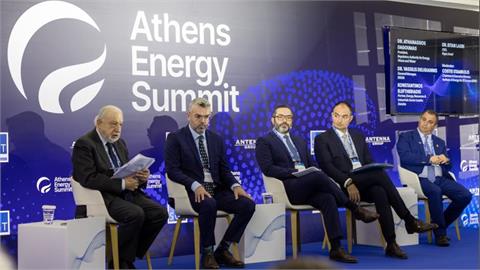Record deployment of clean energy technologies, such as solar PV and batteries, is propelling unprecedented growth in the critical minerals markets. According to the IEA, electric car sales increased by 60% in 2022, exceeding 10 million units worldwide. Energy storage systems experienced even more rapid growth, with capacity additions doubling in 2022. Solar PV installations continue to shatter previous records, and wind power is set to resume its upward march after two subdued years.
Record deployment of clean energy technologies, such as solar PV and batteries, is propelling unprecedented growth in the critical minerals markets. According to the IEA, electric car sales increased by 60% in 2022, exceeding 10 million units worldwide. Energy storage systems experienced even more rapid growth, with capacity additions doubling in 2022. Solar PV installations continue to shatter previous records, and wind power is set to resume its upward march after two subdued years. This has led to a significant increase in demand for critical minerals.
From 2017 to 2022, demand from the energy sector was the main factor behind a tripling in overall demand for lithium, a 70% jump in demand for cobalt, and a 40% rise in demand for nickel. In 2022, the share of clean energy applications in total demand reached 56% for lithium, 40% for cobalt and 16% for nickel, up from 30% for lithium, 17% for cobalt and 6% for nickel five years ago.
Driven by rising demand and high prices, the market size of key energy transition minerals doubled over the past five years, reaching $320 billion in 2022, as the IEA notes. This contrasts with the modest growth of bulk materials like zinc and lead. As a result, energy transition minerals, which used to be a small segment of the market, are now moving centre stage in the mining and metals industry. This brings new revenue opportunities for the industry, creates jobs for the society, and in some cases helps diversify coal-dependent economies.
The Monthly Analysis of July 2023, which is available here, attempts to shed light on the vital role of critical minerals at European and SE European level, as numerous energy projects (e.g. EVs, RES, energy storage, etc.) are anticipated to be built in the wider region over the next years.
In SE Europe, business opportunities for Albania, Bosnia and Herzegovina, Montenegro, North Macedonia and Serbia are mainly associated with metallic commodities and include exploration activities to increase the level of confidence and reserves and Development of Mines or Green Field areas. In Croatia, the majority of business opportunities are related to the exploration and development of mines of non-metallic commodities.
However, the problem is that time is limited. According to the World Bank, global demand for critical raw materials is expected to increase 500% by 2050, causing prices to skyrocket. Also, the prices of critical minerals and permanent magnets, where China has a quasi-monopoly, rose by 50%-90% in 2021. That’s why the USA (with the Inflation Reduction Act of 2022), Japan or South Korea are all deploying sizable support and investments to lessen their dependence on the extraction, processing and recycling of critical raw materials.




